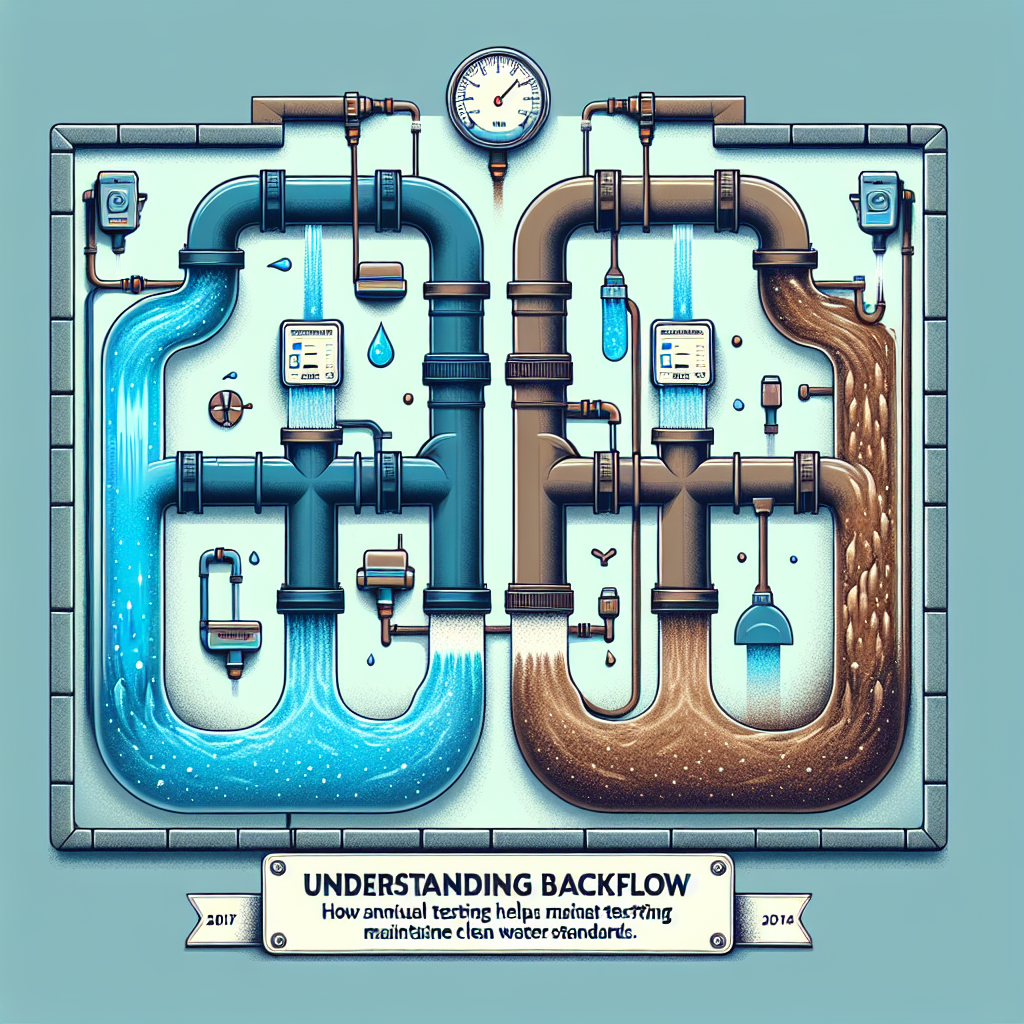Water is an essential resource for our daily lives, influencing our health, hygiene, and overall well-being. But while we often take clean drinking water for granted, it’s crucial to understand the processes that protect this vital resource. One such process involves backflow prevention—an area where annual testing plays a critical role. In this article, we will explore the concept of backflow, its implications for water quality, and why annual testing is necessary to ensure the safety of our water supply.
What is Backflow?
Backflow refers to the unwanted reverse flow of water in a plumbing system. This phenomenon can occur when there is a difference in pressure within the water system, allowing contaminated water to flow back into the potable (drinking) water supply. Common causes of backflow include:
-
Backpressure: This occurs when the pressure in the downstream system exceeds that of the supply side, often due to pumps or elevation changes.
- Backsiphonage: This occurs when there’s a sudden drop in pressure in the supply system, leading to the suction of contaminated water into the clean water supply.
Understanding backflow is essential because it can pose significant health risks. Contaminants from sources like irrigation systems, industrial waste, or even sewer lines can enter the drinking water supply, endangering public health.
The Importance of Clean Water Standards
Clean water standards are regulations designed to protect the health of the public and the environment. These standards help ensure that water is free from harmful substances that could lead to serious health issues, including gastrointestinal problems, reproductive issues, and neurological disorders. Maintaining clean water standards is vital, and that’s where backflow prevention and annual testing come into play.
How Does Backflow Prevention Work?
Backflow prevention devices are crucial components of plumbing systems. They are designed to stop contaminated water from flowing back into the safe water supply. Some common types of backflow prevention devices include:
-
Air Gaps: Physical separation between the supply and discharge points prevents backflow.
-
Check Valves: These devices allow water to flow in one direction, automatically closing if backflow occurs.
- Reduced Pressure Zone (RPZ) Assemblies: These provide advanced protection against backflow from hazardous substances.
While installing these devices is essential, regular testing is equally important to ensure their effectiveness.
Why Annual Testing is Essential
1. Ensures Functionality: Regular testing helps confirm that backflow prevention devices are working correctly. Over time, wear and tear can compromise their effectiveness, allowing potential contaminants to slip through.
2. Compliance with Regulations: Many local and state governments require businesses and homeowners to perform annual backflow testing to comply with water safety regulations. Regular tests help ensure that properties are adhering to these laws.
3. Protects Public Health: Regular backflow testing is crucial for protecting the community from potential health hazards. By ensuring that prevention devices are functioning correctly, we help maintain the integrity of the entire water supply system.
4. Identifies Potential Issues Early: Routine testing can uncover potential problems before they escalate into costly repairs or significant health risks. Identifying issues early means safer water and less expensive long-term solutions.
Choosing the Right Testing Company
When it comes to annual backflow testing, selecting a qualified and reliable company is vital. Here are some factors to consider:
-
Licensing and Certification: Ensure the company is licensed and certified to perform backflow testing in your area.
-
Experience: Look for a company with a proven track record and a solid reputation in your community.
-
Customer Reviews: Reading reviews from previous customers can provide insight into a company’s reliability and quality of service.
- Comprehensive Services: A good testing company should offer a range of services, including installation, maintenance, and emergency support.
Conclusion: A Collective Responsibility
Ensuring the safety and cleanliness of our water supply is a shared responsibility. By understanding the importance of backflow prevention and the necessity of annual testing, we can collectively contribute to a healthier community. Regular testing not only protects individual homes and businesses but strengthens the fabric of public health.
So, don’t overlook the significance of backflow prevention. Schedule your annual test today and invest in the health and safety of your family and community. Clean water is more than just a convenience—it’s a fundamental right that we must all work to protect.


